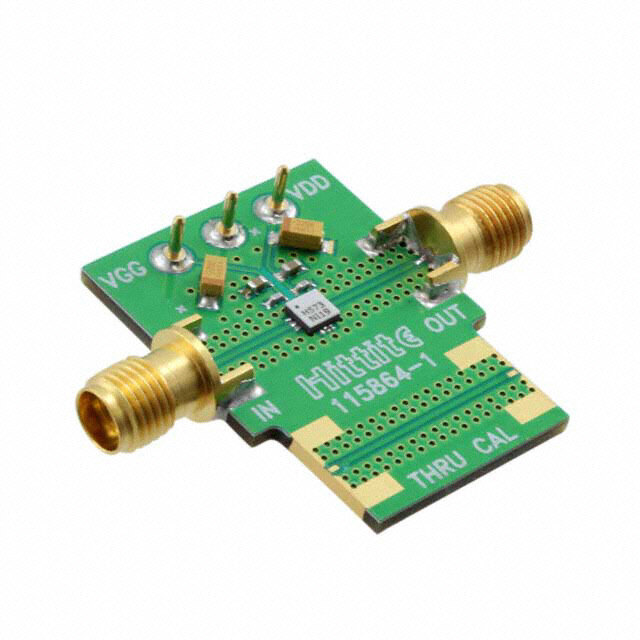ICGOO在线商城 > 射频/IF 和 RFID > RF 评估和开发套件,板 > AD6657EBZ
- 型号: AD6657EBZ
- 制造商: Analog
- 库位|库存: xxxx|xxxx
- 要求:
| 数量阶梯 | 香港交货 | 国内含税 |
| +xxxx | $xxxx | ¥xxxx |
查看当月历史价格
查看今年历史价格
AD6657EBZ产品简介:
ICGOO电子元器件商城为您提供AD6657EBZ由Analog设计生产,在icgoo商城现货销售,并且可以通过原厂、代理商等渠道进行代购。 AD6657EBZ价格参考。AnalogAD6657EBZ封装/规格:RF 评估和开发套件,板, 。您可以下载AD6657EBZ参考资料、Datasheet数据手册功能说明书,资料中有AD6657EBZ 详细功能的应用电路图电压和使用方法及教程。
| 参数 | 数值 |
| 产品目录 | |
| 描述 | BOARD EVALUATION FOR AD6657数据转换 IC 开发工具 EVAL BRD - Quad IF Receiver |
| 产品分类 | |
| 品牌 | Analog Devices |
| 产品手册 | |
| 产品图片 |
|
| rohs | 符合RoHS无铅 / 符合限制有害物质指令(RoHS)规范要求 |
| 产品系列 | 模拟与数字IC开发工具,数据转换 IC 开发工具,Analog Devices AD6657EBZ- |
| 数据手册 | |
| 产品型号 | AD6657EBZ |
| 产品 | Evaluation Boards |
| 产品种类 | 数据转换 IC 开发工具 |
| 商标 | Analog Devices |
| 封装 | Bulk |
| 工作电源电压 | 6 V |
| 工作电源电流 | 2 A |
| 工具用于评估 | AD6657 |
| 工厂包装数量 | 1 |
| 所含物品 | 板 |
| 接口类型 | SPI, USB |
| 描述/功能 | Quad IF receiver with noise shaping requantizer |
| 最大工作温度 | + 85 C |
| 最小工作温度 | - 40 C |
| 标准包装 | 1 |
| 用于 | HSC-ADC-EVALCZ |
| 类型 | ADC |
| 系列 | AD6657 |
| 视频文件 | http://www.digikey.cn/classic/video.aspx?PlayerID=1364138032001&width=640&height=505&videoID=2245193150001 |
| 配套使用产品/相关产品 | AD6657 |
| 频率 | 0Hz ~ 800MHz |


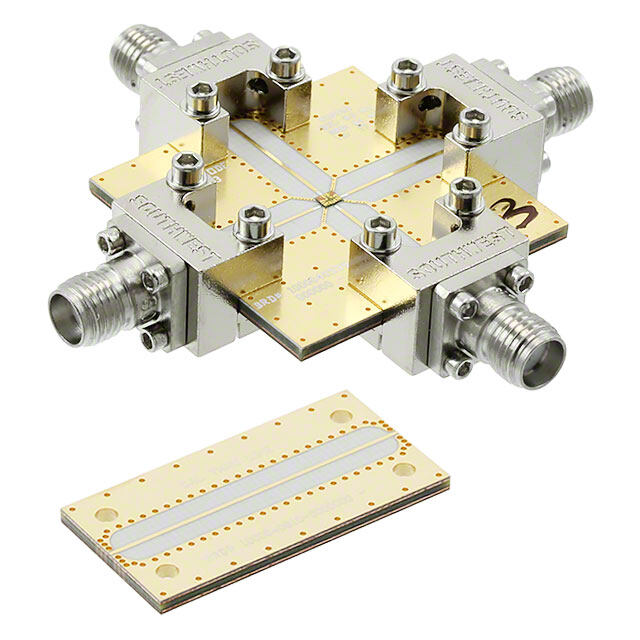
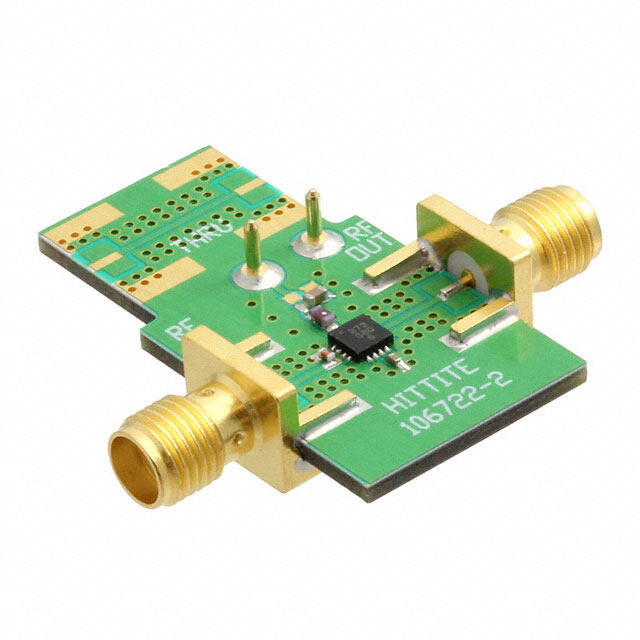

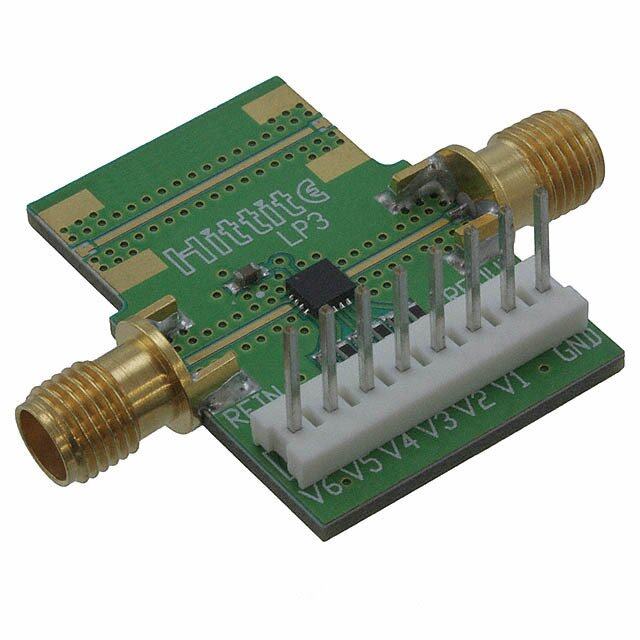

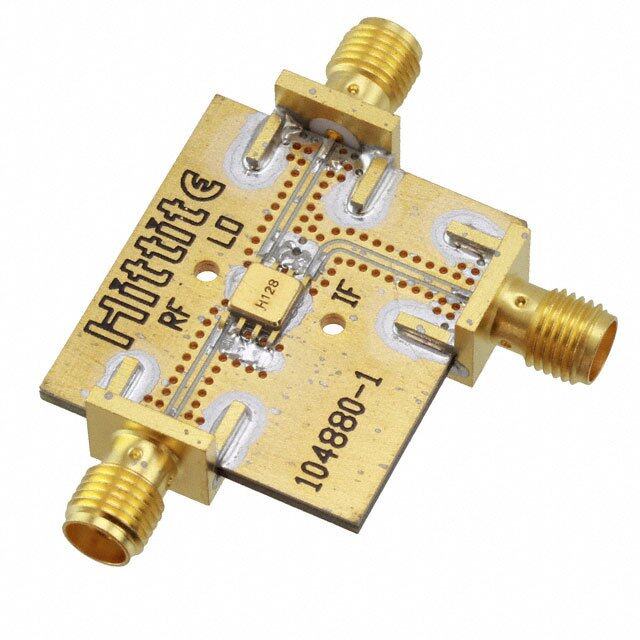
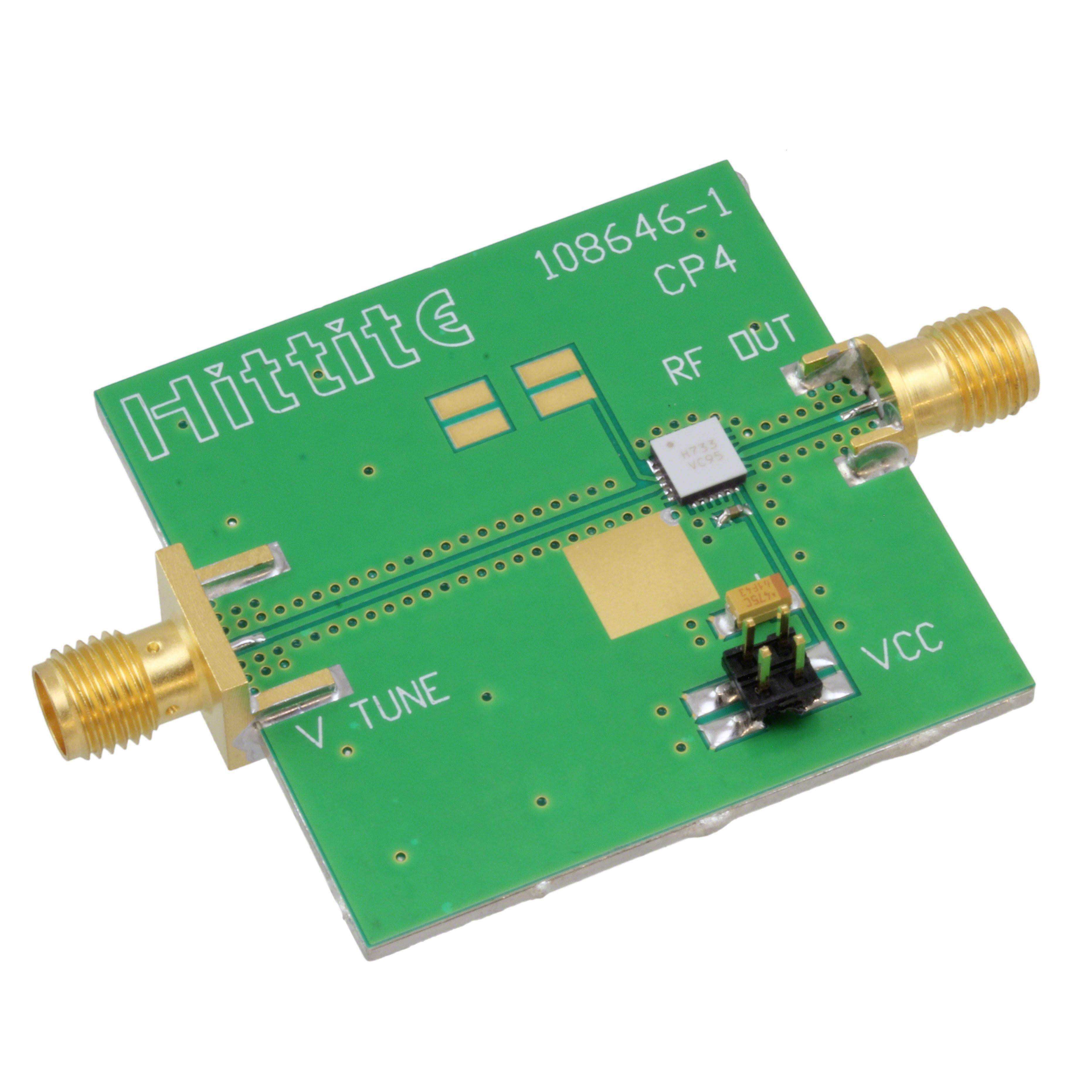

- 商务部:美国ITC正式对集成电路等产品启动337调查
- 曝三星4nm工艺存在良率问题 高通将骁龙8 Gen1或转产台积电
- 太阳诱电将投资9.5亿元在常州建新厂生产MLCC 预计2023年完工
- 英特尔发布欧洲新工厂建设计划 深化IDM 2.0 战略
- 台积电先进制程称霸业界 有大客户加持明年业绩稳了
- 达到5530亿美元!SIA预计今年全球半导体销售额将创下新高
- 英特尔拟将自动驾驶子公司Mobileye上市 估值或超500亿美元
- 三星加码芯片和SET,合并消费电子和移动部门,撤换高东真等 CEO
- 三星电子宣布重大人事变动 还合并消费电子和移动部门
- 海关总署:前11个月进口集成电路产品价值2.52万亿元 增长14.8%
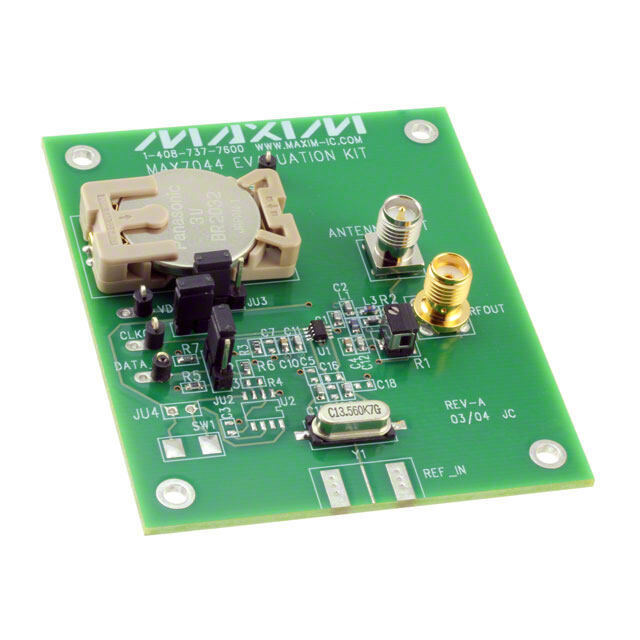
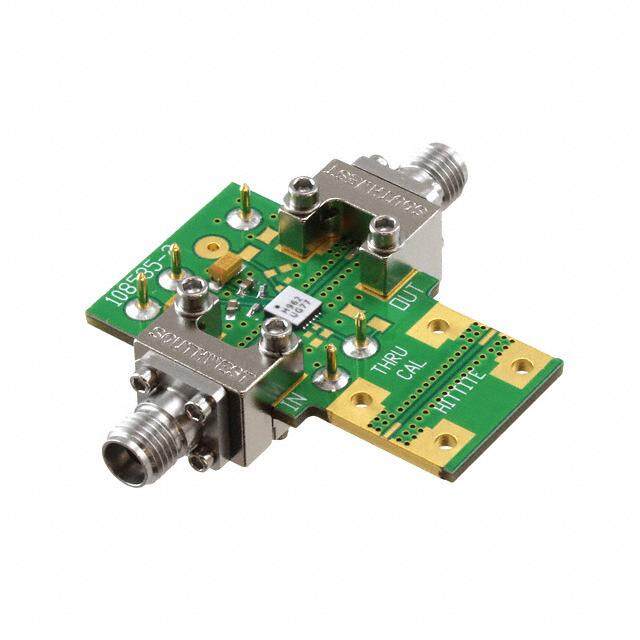

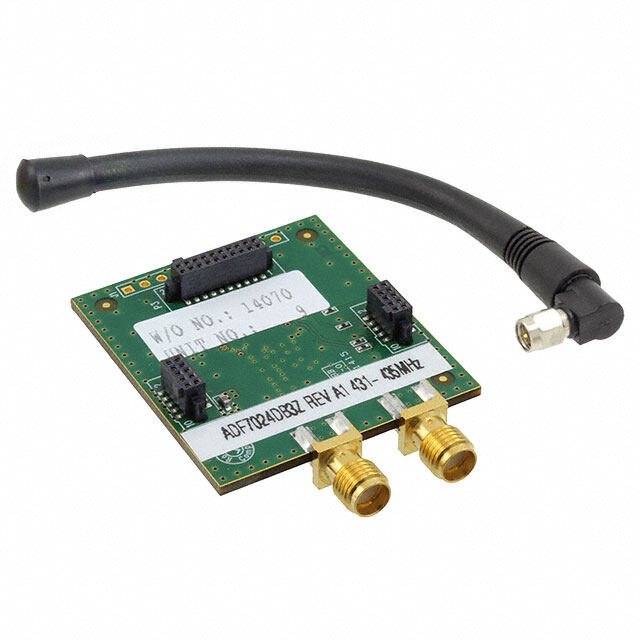
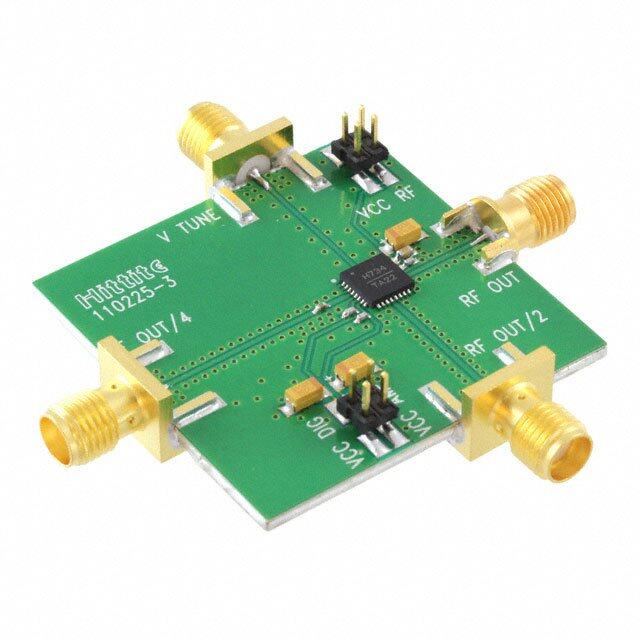
PDF Datasheet 数据手册内容提取
Evaluation Board User Guide UG-232 One Technology Way • P.O. Box 9106 • Norwood, MA 02062-9106, U.S.A. • Tel: 781.329.4700 • Fax: 781.461.3113 • www.analog.com Evaluating the AD6642/AD6657 Analog-to-Digital Converters FEATURES DOCUMENTS NEEDED Full featured evaluation board for the AD6642/AD6657 AD6642 or AD6657 data sheet SPI interface for setup and control HSC-ADC-EVALCZ data sheet External, on-board oscillator or AD9517 clocking options AN-905 Application Note, VisualAnalog Converter Evaluation Balun/transformer or amplifier input drive options Tool, Version 1.0 User Manual LDO regulator power supply AN-878 Application Note, High Speed ADC SPI Control Software VisualAnalog® and SPI controller software interfaces AN-877 Application Note, Interfacing to High Speed ADCs via SPI AN-835 Application Note, Understanding ADC Testing and Evaluation EQUIPMENT NEEDED Analog signal source and antialiasing filter GENERAL DESCRIPTION Sample clock source (if not using the on-board oscillator) 2 switching power supplies (6.0 V, 2.5 A), CUI, Inc. This document describes the AD6642 and AD6657 evaluation EPS060250UH-PHP-SZ, provided board, which provides all of the support circuitry required to PC running Windows® 98 (2nd ed.), Windows 2000, operate the AD6642 or AD6657 in their various modes and Windows ME, or Windows XP configurations. The application software used to interface with USB 2.0 port, recommended (USB 1.1 compatible) the devices is also described. AD6642 or AD6657 evaluation board The AD6642 and AD6657 data sheets provide additional HSC-ADC-EVALCZ FPGA-based data capture kit information and should be consulted when using the evaluation board. All documents and software tools are available at SOFTWARE NEEDED www.analog.com/fifo. For additional information or questions, send an email to highspeed.converters@analog.com. VisualAnalog SPI controller TYPICAL MEASUREMENT SETUP 09572-001 Figure 1. AD6642 and AD6657 Evaluation Board and HSC-ADC-EVALCZ Data Capture Board Please see the last page for an important warning and disclaimers. Rev. 0 | Page 1 of 32
UG-232 Evaluation Board User Guide TABLE OF CONTENTS Features .............................................................................................. 1 Input Signals...................................................................................3 Equipment Needed ........................................................................... 1 Output Signals ...............................................................................3 Software Needed ............................................................................... 1 Default Operation and Jumper Selection Settings ....................5 Documents Needed .......................................................................... 1 Evaluation Board Software Quick Start Procedures .....................6 General Description ......................................................................... 1 Configuring the Board .................................................................6 Typical Measurement Setup ............................................................ 1 Using the Software for Testing .....................................................6 Revision History ............................................................................... 2 Evaluation Board Schematics and Artwork ................................ 11 Evaluation Board Hardware ............................................................ 3 Ordering Information .................................................................... 25 Power Supplies .............................................................................. 3 Bill of Materials ........................................................................... 25 REVISION HISTORY 12/10—Revision 0: Initial Version Rev. 0 | Page 2 of 32
Evaluation Board User Guide UG-232 EVALUATION BOARD HARDWARE The AD6642 and AD6657 evaluation board provides all of the needed with a 1 A current capability for DUT_AVDD and support circuitry required to operate these parts in their various DRVDD; however, it is recommended that separate supplies modes and configurations. Figure 2 shows the typical bench be used for both analog and digital domains. An additional characterization setup used to evaluate the ac performance of supply is also required to supply 1.8 V for digital support circuitry the AD6642 or AD6657. It is critical that the signal sources used on the board, DVDD. This should also have a 1 A current for the analog input and clock have very low phase noise (<1 ps capability and can be combined with DRVDD with little or no rms jitter) to realize the optimum performance of the signal degradation in performance. To operate the evaluation board chain. Proper filtering of the analog input signal to remove using the SPI and alternate clock options, a separate 3.3 V analog harmonics and lower the integrated or broadband noise at the supply is needed in addition to the other supplies. This 3.3 V supply, input is necessary to achieve the specified noise performance. or 3P3V_ANALOG, should have a 1 A current capability. This 3.3 V supply is also used to support optional input path amplifiers The AD6642 and AD6657 evaluation board covers two general (ADL5562) on Channel A and Channel B. An additional supply, part families. The boards are populated slightly differently for 5V_SUPPORT, is used to bias the optional dual input path each family. The AD6642 is one part supported by this evaluation amplifier (AD8376) on Channel C and Channel D. If used, board, and the AD6657 is the second part supported by this these supplies should each have 1 A current capability. evaluation board. The evaluation board supports quad-channel operation for the AD6657 while supporting dual-channel INPUT SIGNALS operation for the AD6642. When connecting the clock and analog source, use clean signal See the Evaluation Board Software Quick Start Procedures section generators with low phase noise, such as the Rohde & Schwarz SMA, to get started, and see Figure 20 to Figure 36 for the complete or HP 8644B signal generators or an equivalent. Use a 1 m shielded, schematics and layout diagrams. These diagrams demonstrate RG-58, 50 Ω coaxial cable for connecting to the evaluation board. the routing and grounding techniques that should be applied at Enter the desired frequency and amplitude (see the Specifications the system level when designing application boards using these section in the data sheet of the respective part). When connecting converters. the analog input source, use of a multipole, narrow-band band-pass POWER SUPPLIES filter with 50 Ω terminations is recommended. Analog Devices, Inc., uses TTE and K&L Microwave, Inc., band-pass filters. The filters This evaluation board comes with a wall-mountable switching should be connected directly to the evaluation board. power supply that provides a 6 V, 2 A maximum output. Connect If an external clock source is used, it should also be supplied the supply to the rated 100 V ac to the 240 V ac wall outlet at with a clean signal generator as previously specified. Typically, 47 Hz to 63 Hz. The output from the supply is provided through most Analog Devices evaluation boards can accept ~2.8 V p-p or a 2.1 mm inner diameter jack that connects to the printed circuit 13 dBm sine wave input for the clock. board (PCB) at P201. The 6 V supply is fused and conditioned on the PCB before connecting to the low dropout linear regulators OUTPUT SIGNALS (default configuration) that supply the proper bias to each of the The default setup uses the Analog Devices high speed converter various sections on the board. evaluation platform (HSC-ADC-EVALCZ) for data capture. The evaluation board can be powered in a nondefault condition The output signals from Channel A/Channel B for the AD6642 using external bench power supplies. To do this, the E201, E202, and Channel A/Channel B/Channel C/Channel D for the AD6657 E204, E205, and E207 ferrite beads can be removed to disconnect are routed through P951 and P952, respectively, to the FPGA on the outputs from the on-board LDOs. This enables the user to the data capture board. bias each section of the board individually. Use P202 and P203 to connect a different supply for each section. A 1.8 V supply is Rev. 0 | Page 3 of 32
UG-232 Evaluation Board User Guide WALL OUTLET 100V TO 240V AC 47Hz TO 63Hz SWITCHING POWER SUPPLY SWITCHING POWER SUPPLY 6V DC 2A MAX 6V DC 2A MAX SIGNAL SYNTHESIZER ANALOG FILTER SIGNAL SYNTHESIZER PC RUNNING ADC ANALYZER OR VISUAL ANALOG USER SOFTWARE SIGNAL SIGNAL ANALOG FILTER SYNTHESIZER SYNTHESIZER OPTIONAL CLOCK SOURCE ANALOG FILTER ANALOG FILTER 09572-002 Figure 2. Evaluation Board Connection Rev. 0 | Page 4 of 32
Evaluation Board User Guide UG-232 DEFAULT OPERATION AND JUMPER SELECTION Clock Circuitry SETTINGS The default clock input circuit that is populated on the This section explains the default and optional settings or modes AD6642/AD6657 evaluation board uses a simple transformer- allowed on the AD6642/AD6657 Rev. B evaluation board. coupled circuit using a high bandwidth 1:1 impedance ratio transformer (T701) that adds a very low amount of jitter to the Power Circuitry clock path. The clock input is 50 Ω terminated and ac-coupled Connect the switching power supply that is supplied in the to handle single-ended sine wave types of inputs. The transformer evaluation kit between a rated 100 V ac to 240 V ac wall outlet converts the single-ended input to a differential signal that is at 47 Hz to 63 Hz and P201. clipped by CR701 before entering the ADC clock inputs. Analog Input The board is set by default to use an external clock generator. An The A and B channel inputs on the evaluation board are set up for external clock source capable of driving a 50 Ω terminated input a double balun-coupled analog input with a 50 Ω impedance. This should be connected to J702. input network is optimized to support a wide frequency band. See A differential LVPECL clock driver output can also be used to the AD6642 and AD6657 data sheets for additional information on clock the ADC input using the AD9517 (U901). To place the the recommended networks for different input frequency ranges. AD9517 into the clock path, populate R727 and R728 with 0 Ω The nominal input drive level is 10 dBm to achieve 2 V p-p full resistors and remove R713 and R714 to disconnect the default clock scale into 50 Ω. At higher input frequencies, slightly higher input path inputs. In addition, populate R817 and R816 with 0 Ω drive levels are required due to losses in the front-end network. resistors and remove R815 and R818 to disconnect the default Optionally, Channel A and Channel B inputs on the board can clock path outputs and insert the AD9517 LVPECL Output 1. The be configured to use the ADL5562 ultralow distortion RF/IF AD9517 must be configured through the SPI controller software to differential amplifier. The ADL5562 components are included on set up the PLL and other operation modes. Consult the AD9517 the evaluation board at U501 and U502. However, the path into data sheet for more information about these and other options. and out of the ADL5562 can be configured in many different ways PDWN depending on the application; therefore, the parts in the input To enable the power-down feature, add a shorting jumper across and output path are left unpopulated. The user should see the P702 at Pin 1 and Pin 2 to connect the PDWN pin to AVDD. ADL5562 data sheet for additional information on this part and for configuring the inputs and outputs. The ADL5562 by default NSR is held in power-down mode but can be enabled by adding a To enable the noise shaping requantizer (NSR) feature, add a jumper on P501 (Channel A) or P502 (Channel B). The ADL5562, shorting jumper across P701 at Pin 1 and Pin 2 to connect the on the Channel A and Channel B inputs, can also be substituted NSR ON pin to GND. The NSR feature can also be enabled via with the ADA4937 or the ADA4938 to allow evaluation of these the SPI interface by writing to Register 0x3C. Writing to Bit 4 parts with the ADC. allows the user to ignore the MODE pin and enable the NSR via The Channel C and Channel D inputs are set up with an optional SPI control. input path through the AD8376 digitally variable gain amplifier (DVGA). Similar to Channel A and Channel B, the amplifier is included on the board at U601; however, the input-/output-related components are not included. The user should see the AD8376 data sheet for additional information on this part and for configuring the inputs and outputs. The AD8376 channels are also normally held in power-down mode and can be enabled by adding a jumper on P602 (Channel C) or P601 (Channel D). 8.2pF 0.1µF 49.9Ω 33Ω 2V p-p VIN+ 36Ω PA S S P 8.2pF AD6642/AD6657 0.1µF 0.1µF 36Ω 33Ω VIN– VCM 49.9Ω 8.2pF 09572-003 Figure 3. Default Analog Input Configuration of the AD6642/AD6657 Rev. 0 | Page 5 of 32
UG-232 Evaluation Board User Guide EVALUATION BOARD SOFTWARE QUICK START PROCEDURES This section provides quick start procedures for using the AD6642/AD6657 evaluation board. Both the default and optional settings are described. CONFIGURING THE BOARD Before using the software for testing, configure the evaluation board as follows: 1. Connect the evaluation board to the data capture board, as shown in Figure 1 and Figure 2. 2. Connect one 6 V, 2.5 A switching power supply (such as the CUI EPS060250UH-PHP-SZ supplied) to the AD6642/ AD6657 board. 3. Caso tnhnee CctU oIn EeP 6S V06, 022.55 A0U sHwi-tPcHhiPn-gS pZo swueprp sliuepdp) ltyo ( tshuec h 09572-004 HSC-ADC-EVALCZ board. Figure 4. VisualAnalog - New Canvas Window 4. Connect the HSC-ADC-EVALCZ board (J6) to the PC 2. After the template is selected, a message appears asking if with a USB cable. the default configuration can be used to program the FPGA 5. On the ADC evaluation board, confirm that there are no (see Figure 5). Click Yes, and the window closes. jumpers installed on any of the header pins. 6. Connect a low jitter sample clock to the connector J702. 7. When using the AD6642 version of the ADC evaluation board, use a clean signal generator with low phase noise to provide an input signal to the desired A and/or B channel(s). If using the AD6657 version of the ADC evaluation board, use a clean signal generator with low phase noise to provide an input signal to the desired A, B, C, and/or D channel(s). Uthsee s aig 1n aml g, esnheierladtoerd. ,F RoGr b-5es8t, r5e0su Ωlts c, ouasxei aa ln caarbrloew to-b caonndn becatn d- 09572-005 pass filter with 50 Ω terminations and an appropriate center Figure 5. VisualAnalog Default Configuration Message frequency. (Analog Devices uses TTE, Allen Avionics, and 3. To change features to settings other than the default settings, K&L band-pass filters.) click the Expand Display button, located on the bottom USING THE SOFTWARE FOR TESTING right corner of the window shown in Figure 6 to see what is shown in Figure 7. Setting Up the ADC Data Capture After configuring the board, set up ADC data capture using the Detailed instructions for changing the features and capture following steps: settings can be found in the AN-905 Application Note, 1. Open VisualAnalog on the connected PC. The appropriate VisualAnalog Converter Evaluation Tool Version 1.0 User part type should be listed in the status bar of the Manual. After the changes are made to the capture settings, VisualAnalog – New Canvas window. Select the template click Collapse Display (see Figure 7). that corresponds to the type of testing to be performed (see Figure 4 where the AD6657 is shown as an example). EXPAND DISPLAY 09572-006 Figure 6. VisualAnalog – [Canvas – (AD6657 FFT)*] Window Toolbar, Collapsed Display Rev. 0 | Page 6 of 32
Evaluation Board User Guide UG-232 COLLAPSE DISPLAY 09572-007 Figure 7. VisualAnalog – [Canvas – (AD6657 FFT)*], Main Window Setting Up the SPI Controller Software After the ADC data capture board setup is complete, set up the SPIController software using the following procedure: 1. Open the SPI controller software by going to the Start menu or by double-clicking the SPIController software desktop icon. If prompted for a configuration file, select the appropriate one. If not, check the title bar of the window to determine which configuration is loaded. If necessary, choose Cfg Open from the File menu and select the appropriate file bshaoseudld o bne y foilulerd p taor ti ntydpicea. tNe owteh eththaet rt hthe eC cHorIrPe cItD S(P1I) field 09572-008 controller configuration file is loaded (see Figure 8). Figure 8. SPIController, CHIP ID(1) Box Rev. 0 | Page 7 of 32
UG-232 Evaluation Board User Guide 2. Click the New DUT button in the SPIController window 4. Note that other settings can be changed on the ADCBase 0 (see Figure 9). page (see Figure 10) and the ADC A and ADC B pages (see Figure 11) to set up the part in the desired mode (ADC C NEW DUT BUTTON and ADC D can also be changed if using the AD6657). The ADCBase 0 page settings affect the entire part, whereas the settings on the ADC A and ADC B (as well as ADC C and ADC D) pages affect the selected channel only. See the appropriate part data sheet; the AN-878 Application Note, High Speed ADC SPI Control Software; and the AN-877 Application Note, Interfacing to High Speed ADCs via SPI, for additional information on the available settings. 09572-009 Figure 9. SPIController, New DUT Button 3. In the ADCBase 0 tab of the SPIController window, find the CLK DIV(B) box (see Figure 10). If using the clock divider, use the drop-down box to select the correct clock divide ratio, if necessary. See the appropriate part data sheet; the AN-878 Application Note, High Speed ADC SPI Control Software; and the AN-877 Application Note, Interfacing to High Speed ADCs via SPI, for additional information. 09572-011 Figure 11. SPIController, Example ADC A Page 5. Click the Run button in the VisualAnalog – [Canvas – (AD6657 FFT)*] toolbar (see Figure 12). 09572-012 Figure 12. Run Button (Encircled in Red) in VisualAnalog – [Canvas – 09572-010 (AD6657 FFT)*] Toolbar, Collapsed Display Figure 10. SPIController, CLK DIV(B) Box Rev. 0 | Page 8 of 32
Evaluation Board User Guide UG-232 Adjusting the Amplitude of the Input Signal The next step is to adjust the amplitude of the input signal for each channel as follows: 1. Adjust the amplitude of the input signal so that the fundamental is at the desired level. (Examine the Fund Power reading in the left panel of the Graph – AD6657 Average FFT window; see Figure 13.) 09572-015 Figure 15. SPIController, Example ADC A Page – NSR Settings 5. Repeat this procedure for Channel B, Channel C, and/or Channel D. 6. Click on the button circled in the FFT Analysis box (see Figure 16) in Visual Analog to bring up the options for setting the NSR. 09572-013 Figure 13. Graph – AD6657 Average FFT Window of VisualAnalog 2. Repeat this procedure for Channel B, Channel C, and/or Channel D. 3. Click the disk icon within the Graph – AD6657 Average FFT window to save the performance plot data as a .csv formatted file. See Figure 14 for an example. 0 fS = 185MSPS fIN = 30.3MHz @ –1dBFS –20 SSNFDRR = =6 58.97.d7dBB (6c6.7dBFS) 09572-016 Figure 16. VisualAnalog – [Canvas – (AD6657 FFT)*] Main Window – S) –40 Showing AD6657 Average FFT Analysis F B E (d 7. Configure the settings in the FFT Analysis to match the D –60 U settings selected for the NSR in the SPIController (see T PLI SECOND Figure 17). AM –80 HARMONIC THIRD HARMONIC –100 –1200 10 20 30FREQ40UENC5Y0 (MHz6)0 70 80 90 09572-014 Figure 14. Typical FFT, AD6657 4. If using the NSR feature, first change the settings in the ADC A, ADC B, ADC C, and/or ADC D pages (see Figure 15) to the desired settings. 09572-017 Figure 17. VisualAnalog, FFT Analysis Settings Rev. 0 | Page 9 of 32
UG-232 Evaluation Board User Guide 8. The result should show an FFT plot that looks similar to Troubleshooting Tips Figure 18. If the FFT plot appears abnormal, do the following: • If you see a normal noise floor when you disconnect the signal generator from the analog input, be sure you are not overdriving the ADC. Reduce the input level, if necessary. • In the VisualAnalog window, click the Settings button in the Input Formatter block. Check that Number Format is set to the correct encoding (offset binary by default). Repeat for the other channel. If the FFT appears normal but the performance is poor, check the following: • Make sure an appropriate filter is used on the analog input. • Make sure the signal generators for the clock and the analog input are clean (low phase noise). 09572-018 • Csahmapnlgien gth ies baneianlog gu isnepdu. t frequency slightly if noncoherent Figure 18. Graph – AD6657 Average FFT Window of VisualAnalog, NSR Enabled • Make sure the SPI configuration file matches the product 9. The amplitude shows approximately 0.6 dB lower than being evaluated. when the NSR is disabled. The NSR circuitry introduces If the FFT window remains blank after clicking Run, do the this loss. An amplitude of −1.6 dBFS with NSR enabled is following: analogous to an amplitude of −1.0 dBFS with NSR disabled. 10. Click the disk icon within the Graph window to save the • Make sure the evaluation board is securely connected to performance plot data as a .csv formatted file. See Figure 19 the HSC-ADC-EVALCZ board for an example. • Make sure the FPGA has been programmed by verifying that the DONE LED is illuminated on the HSC-ADC- 0 ffSIN == 118450M.1SMPHSz @ –1.6dBFS EVALCZ board. If this LED is not illuminated, make sure –20 NSNSRR 2=2 7%3 dBBW (7 M4.O6dDBEF, ST)W ( I=N -2B8AND) the U4 switch on the board is in the correct position for SFDR = 89.7dBc (IN-BAND) USB CONFIG. –40 S) • Make sure the correct FPGA program was installed by F dB –60 SECOND selecting the Settings button in the ADC Data Capture DE ( HARMONIC block in the VisualAnalog window. Then select the FPGA U THIRD LIT –80 HARMONIC tab and verify that the proper FPGA bin file is selected for P M the part. A –100 If VisualAnalog indicates that the FIFO Capture timed out, –120 do the following: –1400 10 20 30FREQ40UENC5Y0 (MHz6)0 70 80 90 09572-019 •• MPraokbee stuhree D alCl OpoAwBe rs iagnnda lU atS Bei tchoenrn Peicnt iAon1s0 aorre Pseinc uBr1e0. on Figure 19. Typical FFT, AD6657 with NSR Enabled the P951 connector on the evaluation board and confirm that a clock signal is present at the ADC sampling rate. Rev. 0 | Page 10 of 32
Evaluation Board User Guide UG-232 EVALUATION BOARD SCHEMATICS AND ARTWORK 020-27590 Figure 20. DUT and Related Circuits Rev. 0 | Page 11 of 32
UG-232 Evaluation Board User Guide 120-27590 Figure 21. Board Power Input and Supply Rev. 0 | Page 12 of 32
Evaluation Board User Guide UG-232 220-27590 Figure 22. Passive Analog Input Circuits, Channel A and Channel B Rev. 0 | Page 13 of 32
UG-232 Evaluation Board User Guide 320-27590 Figure 23. Passive Analog Input Circuits, Channel C and Channel D Rev. 0 | Page 14 of 32
Evaluation Board User Guide UG-232 420-27590 Figure 24. Optional Active Input Circuits, Channel A and Channel B Rev. 0 | Page 15 of 32
UG-232 Evaluation Board User Guide 520-27590 Figure 25. Optional Active Input Circuits, Channel C and Channel D Rev. 0 | Page 16 of 32
Evaluation Board User Guide UG-232 620-27590 Figure 26. Default Clock Input Circuit Rev. 0 | Page 17 of 32
UG-232 Evaluation Board User Guide 720-27590 Figure 27. Optional Clock Input Circuit Rev. 0 | Page 18 of 32
Evaluation Board User Guide UG-232 820-27590 Figure 28. Optional AD9517 Clock Input Circuit Rev. 0 | Page 19 of 32
UG-232 Evaluation Board User Guide 920-27590 Figure 29. SPI Configuration Circuit Rev. 0 | Page 20 of 32
Evaluation Board User Guide UG-232 030-27590 Figure 30. FIFO Board Connector Circuit Rev. 0 | Page 21 of 32
UG-232 Evaluation Board User Guide 09572-031 Figure 31. AD6657/AD6642 Evaluation Board, Top Side 09572-032 Figure 32. AD6657/AD6642 Evaluation Board, Ground Plane (Layer 2) Rev. 0 | Page 22 of 32
Evaluation Board User Guide UG-232 09572-033 Figure 33. AD6657/AD6642 Evaluation Board, Power Plane (Layer 3) 09572-034 Figure 34. AD6657/AD6642 Evaluation Board, Power Plane (Layer 4) Rev. 0 | Page 23 of 32
UG-232 Evaluation Board User Guide 09572-035 Figure 35. AD6657/AD6642 Evaluation Board, Ground Plane (Layer 5) 09572-036 Figure 36. AD6657/AD6642 Evaluation Board, Bottom Side Rev. 0 | Page 24 of 32
Evaluation Board User Guide UG-232 ORDERING INFORMATION BILL OF MATERIALS Table 1. AD6642 Board BOM Item Qty Reference Designator Description Manufacturer/Part No. 1 1 Not applicable PCBZ 2 16 C101, C102, C103, C104, C105, C106, C109, Ceramic capacitor, 0.1 μF, Panasonic/ECJ-ZEB0J104M C110, C111, C112, C113, C114, C115, C116, 6.3 V, X5R, 0201 C119, C120 3 6 C107, C108, C117, C118, C121, C122 Ceramic capacitor, 1.0 μF, Murata/GRM155R60J105KE19D 6.3 V, 10%, X5R, 0402 4 8 C201, C217, C219, C221, C223, C225, C505, Capacitor tantalum, 10 μF, AVX/TAJA106K010RNJ C525 10 V, 10%, SMD 5 10 C202, C203, C204, C206, C207, C209, C210, Ceramic capacitor, 4.7 μF, Panasonic/ECJ-1VB0J475M C212, C213, C215 6.3 V, X5R, 0603 6 4 C205, C208, C211, C214 Ceramic capacitor, 25 V, TDK/C1005X8R1E103K 0.01 μF, X8R, 10%, 0402 7 68 C216, C218, C220, C222, C224, C301, C305, Ceramic capacitor, 16 V, Panasonic/ECJ-0EX1C104K C401, C405, C501, C502, C503, C504, C521, 0.1 μF, X7R, 0402 C522, C523, C524, C601, C602, C603, C604, C605, C606, C607, C608, C609, C611, C613, C614, C619, C620, C702, C704, C707, C801, C804, C901, C902, C903, C904, C905, C906, C907, C913, C914, C915, C916, C917, C918, C919, C920, C921, C922, C923, C930, C932, R309, R310, R329, R330, R409, R410, R429, R430, R713, R714, R819, R820 8 12 C302, C303, C304, C306, C307, C308, C402, Ceramic capacitor, 50 V, Yageo/0402CG829D9B200 C403, C404, C406, C407, C408 8.2 pF, NP0, 0402 9 2 C610, C612 Ceramic capacitor, 6.3 V, Panasonic/ECJ-2FB0J106M 10 μF, X5R, 0805 10 1 CR201 Diode, fast rec., 50 V, 1 A, SMB Diode, Inc./RS1AB-13-F 11 1 CR202 Schottky diode, 3 amp rectifier MCC/SK33A-TP 12 1 CR203 Green LED surface-mount Panasonic/LNJ314G8TRA 13 3 CR204, CR205, CR206 Diode recovery rectifier Micro Commercial Components Corp/S2A-TP 14 2 CR701, D801 Schottky diode, dual series Avago/HSMS-2812BLK 15 1 CR901 Red LED surface-mount Lumex/SML-LXT0805IW-TR 16 10 E201, E202, E204, E205, E207, E208, E209, E210, Inductor, bead core, 39 Ω, Panasonic/EXC-ML20A390U E211, E212 4 A, 0805, SMD 17 1 F201 Fuse, polyswitch, 1.10 A, Tyco Electronics/NANOSMDC110F-2 reset fuse, SMD 18 1 FL201 Filter, EMI, 50 MΩ, 15 A, Murata/BNX016-01 0.1 MHz to 1 GHz 19 8 J301, J303, J702, J703, J801, J902, J903, P901 Connector, PCB, SMA, Samtec/SMA-J-P-X-ST-EM1 ST edge mount 20 2 J601, J602 Connector, PCB, HDR, ST, 10P Samtec/TSW-105-08-G-D 21 1 J901 Connector, PCB header, Samtec/TSW-104-08-T-D 8-pin, double row 22 4 L601, L602, L607, L608 Inductor, 1 μH, L7144SM Coilcraft/0603LS-102XGLB 23 1 P201 Connector PCB dc power CUI STACK/PJ-202A jack SM 24 1 P202 Connector, PCB header, 6 POS Wieland/Z5.531.3625.0 25 1 P203 Connector, PCB header, 4 POS Wieland/Z5.531.3425.0 26 6 P501, P502, P601, P602, P701, P702 Connector, PCB header, 2 POS Samtec/TSW-102-08-G-S 27 3 P951, P952, P953 Connector, PCB, 60-pin RA Tyco Electronics/6469169-1 connector Rev. 0 | Page 25 of 32
UG-232 Evaluation Board User Guide Item Qty Reference Designator Description Manufacturer/Part No. 28 1 R201 Resistor, 261 Ω, 1/10 W, NIC Comp Corp/NRC06F2610TRF 50 V, 0603, thick film SMD 29 14 R202, R617, R618, R619, R620, R621, R622, Resistor, 10.0 kΩ, 1 /10 W, Panasonic/ERJ-2RKF1002X R623, R624, R625, R626, R930, R940, R941 1%, 0402, SMD 30 1 R203 Resistor, 1.91 kΩ, 1/10 W, Panasonic/ERJ-2RKF1911X 1%, 0402, SMD 31 4 R302, R322, R402, R422 Resistor, 0 Ω, 1/10 W, 5%, Panasonic/ERJ-3GEY0R00V 0603, SMD 32 37 R303, R307, R323, R328, R403, R407, R423, Resistor, 0 Ω, 1/10 W, 5%, Panasonic/ERJ-2GE0R00X R428, R504, R505, R524, R525, R609, R613, 0402, SMD R704, R705, R717, R721, R723, R803, R808, R810, R812, R815, R816, R906, R909, R917, RS201, RS202, RS203, RS204, RS205, RS206, RS207, RS208, RS209 33 8 R313, R314, R333, R334, R413, R414, R433, Resistor, 36 Ω, 1/10 W, Panasonic/ERJ-2GEJ360X R434 5%, 0402, SMD 34 8 R315, R316, R335, R336, R415, R416, R435, Resistor, 33 Ω, 1/10 W, Panasonic/ERJ-2GEJ330X R436 5%, 0402, SMD 35 9 R317, R318, R337, R338, R417, R418, R437, Resistor, 49.9 Ω, 1/10 W, Panasonic/ERJ-2RKF49R9X R438, R720 5%, 0402, SMD 36 4 R501, R502, R521, R522 Resistor, 40.2 Ω, 1/10 W, Panasonic/ERJ-2RKF40R2X 5%, 0402, SMD 37 7 R507, R527, R601, R602, R932, R933, R934 Resistor, 1.1 kΩ, 1/10 W, Panasonic/ERJ-2GEJ112X 5%, 0402, SMD 38 2 R715, R914 Resistor, 100 Ω, 1%, ceramic, Venkel/CR0402-16W-1000FPT palladium term, 0402, SMD 39 2 R718, R719 Resistor, 2 kΩ, thick film, 0402, Multicomp/MC0402WGF2001TCE-TC 1%, 25 V, MCRMC, SMD 40 2 R813, R814 Resistor, 24.9 Ω, 1/10 W, Panasonic/ERJ-2RKF24R9X 1%, 0402, SMD 41 5 R901, R902, R903, R904, R922 Resistor, 1.00 kΩ, 1/10 W, 1%, Panasonic/ERJ-2RKF1001X 0402, SMD 42 1 R905 Resistor, 57.6 Ω, 1/10 W, 1%, Panasonic/ERJ-2RKF57R6X 0402, SMD 43 1 R907 Resistor, 5.11 kΩ, 1/10 W, Panasonic/ERJ-2RKF5111X 1%, 0402, SMD 44 1 R908 Resistor, 4.12 kΩ, 1/10 W, Panasonic/ERJ-2RKF4121X 1%, 0402, SMD 5 R910, R912, R913, R915, R916 Resistor, 200 Ω, 1/10 W, Panasonic/ERJ-2RKF2000X 1%, 0402, SMD 46 3 R931, R942, R943 Resistor, 100 kΩ, 1/10 W, Panasonic/ERJ-2GEJ104X 5%, 0402, SMD 47 4 R936, R937, R938, R939 Resistor, 0.0 Ω, 1/20 W, Panasonic/ERJ-1GE0R00C 5%, 0201, SMD 48 13 T302, T303, T305, T306, T402, T403, T405, T406, Transformer, RF 1:1, M/A-COM/MABA-007159-000000 T501, T521, T702, T802, T901 4.5 MHz to 3000 MHz SMD (OLD ETC1-1-13) 49 2 T601, T602 Transformer, RF 3:1, Mini-Circuits/TC3-1T+ 1 MHz to 50 MHz SMD 50 5 TP901, TP902, TP903, TP904, TP905 Connector, PCB, Components Corp/TP-104-01-09 testpoint, white 51 1 U101 IC-ADI AD6642 Analog Devices/AD6642BBCZ 52 1 U201 IC-ADI low dropout CMOS lin reg Analog Devices/ADP1708ARDZ-R7 53 2 U202, U203 IC-ADI low dropout CMOS lin reg Analog Devices/ADP1706ARDZ-3.3-R7 54 2 U204, U205 IC-ADI low dropout CMOS lin reg Analog Devices/ADP1706ARDZ-1.8-R7 Rev. 0 | Page 26 of 32
Evaluation Board User Guide UG-232 Item Qty Reference Designator Description Manufacturer/Part No. 55 2 U501, U502 IC 2.6 GHz ultralow distortion Analog Devices/ADL5562ACPZ diff IF/RF amp 56 1 U601 IC-ADI ultralow distortion Analog Devices/AD8376ACPZ IF dual VGA 57 1 U901 IC-ADI 12-output CLK gen Analog Devices/AD9517-4BCPZ with int 1.6 GHz VCO 58 2 U902, U933 IC tiny logic buffer DL UHS Fairchild/NC7WZ16P6X N-INV SC706 59 1 U931 IC TinyLogic buffer DL UHS O/ Fairchild/NC7WZ07P6X DRAIN SC706 601 C506, C507, C508, C526, C527, C528, C701, Ceramic capacitor, 0.1 μF, Panasonic/ECJ-0EX1C104K C703, C705, C706, C802, C803, C911, C912, 16 V, X7R, 0402 C931 611 C509, C510, C529, C530 Ceramic capacitor, 5.0 pF, Panasonic/ECU-E1H050CCQ 50 V, 0402, SMD 621 C615, C616, C621, C622 Ceramic capacitor, 1200 pF, Panasonic/ECJ-0EB1H122K 50 V, X7R, 0402 631 C617, C623 Ceramic capacitor Samsung/CL05C2R7CBNC 641 C618, C624 Ceramic capacitor, 22 pF, Phycomp (Yageo)/0402CG220J9B200 50 V, NP0, 0402 651 C908, C910 Ceramic capacitor, 50 V, Panasonic/ECJ-0EB1H152K 1500 pF, X7R, 0402 661 C909 Ceramic capacitor, 0.033 μF, Panasonic/0402YD333KAT2A 10% 16 V, X5R, 0402 671 E203, E206 Inductor, ferrite bead core, Panasonic/EXC-ML20A390U 39 Ω, 4 A, 0805, SMD 681 J302, J304, J401,J402, J403, J404, J701, J802 Connector, PCB, SMA, ST, Samtec/SMA-J-P-X-ST-EM1 edge mount 691 J904 Connector, PCB, coax, SMA, ST Johnson/142-0701-201 701 L301, L302, L401, L402, L505, L506, L535, L536 Inductor, 82 nH, 0603, SMD Murata/LQW1608A82NG 711 L501, L502, L503, L504, L531, L532, L533, L534, Inductor, 120 nH, 5%, fixed, Panasonic/ELJ-RER12JF3 L603, L604, L605, L606, L609, L610, L611, L612 0603, SMD 721 R301, R304, R321, R324, R401, R404, R421, Resistor, 49.9 Ω, 1/10 W, 1%, Panasonic/ERJ-2RKF49R9X R424, R701, R702, R716, R801, R805 0402, SMD 731 R305, R325, R405, R425 Resistor, 0 Ω, 1/10 W, 5%, Panasonic/ERJ-3GEY0R00V 0603, SMD 741 R306, R308, R311, R312, R319, R320, R326, Resistor, 0 Ω, 1/10 W, 5%, Panasonic/ERJ-2GE0R00X R327, R331, R332, R339, R340, R406, R408, 0402, SMD R411, R412, R419, R420, R426, R427, R431, R432, R439, R440, R503, R506, R508, R509, R512, R523, R526, R528, R529, R532, R603, R604, R606, R607, R610, R611, R614, R615, R703, R706, R725, R726, R727, R728, R802, R804, R806, R807, R809, R811, R817, R818, R911, R920, R921, R925, R926, R927 751 R510, R511, R530, R531 Resistor, 1.00 kΩ, 1/10 W, Panasonic/ERJ-2RKF1001X 1%, 0402, SMD 761 R605, R608 Resistor, 130 Ω, 1/10 W, Panasonic/ERJ-2RKF1300X 1%, 0402, SMD 771 R612, R616 Resistor, 300 Ω, 1/10 W, Panasonic/ERJ-2GEJ301X 5%, 0402, SMD 781 R709, R710, R923, R924 Resistor, 24.9 Ω, 1/10 W, Panasonic/ERJ-2RKF24R9X 1%, 0402, SMD 791 R724, R935 Resistor, 10.0 kΩ, 1/10 W, Panasonic/ERJ-2RKF1002X 1%, 0402, SMD 801 R918 Resistor, 200 Ω, 1/10 W, Panasonic/ERJ-2RKF2000X 1%, 0402, SMD Rev. 0 | Page 27 of 32
UG-232 Evaluation Board User Guide Item Qty Reference Designator Description Manufacturer/Part No. 811 R919 Res film, SMD, 0402 Venkel/CR0402-16W-1000FPT 821 T301, T304, T401, T404, T701, T801 XFMR RF Mini-Circuits/ADT1-1WT+ 831 TP907 Connector, PCB, Components Corp/TP-104-01-09 testpoint, white 841 U701, U932 IC-ADI CMOS, quad Analog Devices/ADG734BRUZ SPDT switches 1 Do not install. Table 2. AD6657 Board BOM Item Qty Reference Designator Description Manufacturer/Part No. 1 1 Not applicable PCBZ 2 16 C101, C102, C103, C104, C105, C106, C109, Ceramic capacitor, 0.1 μF, Panasonic/ECJ-ZEB0J104M C110, C111, C112, C113, C114, C115, C116, 6.3 V, X5R, 0201 C119, C120 3 6 C107, C108, C117, C118, C121, C122 Ceramic capacitor, 1.0 μF, Murata/GRM155R60J105KE19D 6.3 V, 10%, X5R, 0402 4 8 C201, C217, C219, C221, C223, C225, C505, Capacitor tantalum, 10 μF, AVX/TAJA106K010RNJ C525 10 V, 10%, SMD 5 10 C202, C203, C204, C206, C207, C209, C210, Ceramic capacitor, 4.7 μF, Panasonic/ECJ-1VB0J475M C212, C213, C215 6.3 V, X5R, 0603 6 4 C205, C208, C211, C214 Ceramic capacitor, 0.01 μF, TDK/C1005X8R1E103K 25 V, X8R, 10%, 0402 7 68 C216, C218, C220, C222, C224, C301, C305, Ceramic capacitor, 0.1 μF, Panasonic/ECJ-0EX1C104K C401, C405, C501, C502, C503, C504, C521, 16 V, X7R, 0402 C522, C523, C524, C601, C602, C603, C604, C605, C606, C607, C608, C609, C611, C613, C614, C619, C620, C702, C704, C707, C801, C804, C901, C902, C903, C904, C905, C906, C907, C913, C914, C915, C916, C917, C918, C919, C920, C921, C922, C923, C930, C932, R309, R310, R329, R330, R409, R410, R429, R430, R713, R714, R819, R820 8 12 C302, C303, C304, C306, C307, C308, C402, Ceramic capacitor, 8.2 pF, Yageo/0402CG829D9B200 C403, C404, C406, C407, C408 50 V, NP0, 0402 9 2 C610, C612 Ceramic capacitor, 10 μF, Panasonic/ECJ-2FB0J106M 6.3 V, X5R, 0805 10 1 CR201 Diode fast rec, 50 V, 1 A, SMB Diode, Inc./S1AB-13 11 1 CR202 Schottky diode, 3 amp rectifier MCC/SK33A-TP 12 1 CR203 LED green surface mount Panasonic/LNJ314G8TRA 13 3 CR204, CR205, CR206 Diode recovery rectifier Micro Commercial Components Corp/S2A-TP 14 2 CR701, D801 Schottky diode, dual series Avago/HSMS-2812BLK 15 1 CR901 LED red surface mount Lumex/SML-LXT0805IW-TR 16 10 E201, E202, E204, E205, E207, E208, E209, E210, Inductor, bead core, 39 Ω, Panasonic/EXC-ML20A390U E211, E212 4 A, 0805, SMD 17 1 F201 Fuse, polyswitch, 1.10 A, Tyco Electronics/NANOSMDC110F-2 reset fuse, SMD 18 1 FL201 Filter, EMI, 50 MΩ, 15 A, Murata/BNX016-01 0.1 MHz to 1 GHz 19 10 J301, J303, J401, J403, J702, J703, J801, J902, Connector, PCB, SMA, ST, Samtec/SMA-J-P-X-ST-EM1 J903, P901 edge mount 20 2 J601, J602 Connector, PCB, hdr, st, 10 p Samtec/TSW-105-08-G-D 21 1 J901 Connector, PCB, header, Samtec/TSW-104-08-T-D 8-pin, double row 22 4 L601, L602, L607, L608 Inductor, 1 μH, L7144SM Coilcraft/0603LS-102XGLB Rev. 0 | Page 28 of 32
Evaluation Board User Guide UG-232 Item Qty Reference Designator Description Manufacturer/Part No. 23 1 P201 Connector, PCB, dc power CUI STACK/PJ-202A jack, SM 24 1 P202 Connector, PCB, header, 6 pos Wieland/Z5.531.3625.0 25 1 P203 Connector, PCB, header, 4 pos Wieland/Z5.531.3425.0 26 6 P501, P502, P601, P602, P701, P702 Connector, PCB, header, 2 pos Samtec/TSW-102-08-G-S 27 3 P951, P952, P953 Connector, PCB, 60-pin, Tyco Electronics/6469169-1 RA connector 28 1 R201 Resistor, 261 Ω, 1/10 W, 50 V, NIC Comp Corp/NRC06F2610TRF 0603, thick film SMD 29 14 R202, R617, R618, R619, R620, R621, R622, Resistor, 10.0 kΩ, 1/10 W, Panasonic/ERJ-2RKF1002X R623, R624, R625, R626, R930, R940, R941 1%, 0402, SMD 30 1 R203 Resistor, 1.91 kΩ, 1/10 W, Panasonic/ERJ-2RKF1911X 1%, 0402, SMD 31 4 R302, R322, R402, R422 Resistor, 0 Ω, 1/10 W, 5%, Panasonic/ERJ-3GEY0R00V 0603, SMD 32 30 R303, R307, R323, R328, R403, R407, R423, Resistor, 0 Ω, 1/10 W, 5%, Panasonic/ERJ-2GE0R00X R428, R504, R505, R524, R525, R609, R613, 0402, SMD R704, R705, R717, R721, R723, R803, R808, R810, R812, R815, R816, R906, R909, R917, RS201, RS205 33 8 R313, R314, R333, R334, R413, R414, R433, Resistor, 36 Ω, 1/10 W, Panasonic/ERJ-2GEJ360X R434 5%, 0402, SMD 34 8 R315, R316, R335, R336, R415, R416, R435, Resistor, 33 Ω, 1/10 W, Panasonic/ERJ-2GEJ330X R436 5%, 0402, SMD 35 9 R317, R318, R337, R338, R417, R418, R437, Resistor, 49.9 Ω, 1/10 W, Panasonic/ERJ-2RKF40R2X R438, R720 1%, 0402, SMD 36 4 R501, R502, R521, R522 Resistor, 40.2 Ω, 1/10W, Panasonic/ERJ-2GEJ112X 1% 0402, SMD 37 7 R507, R527, R601, R602, R932, R933, R934 Resistor, 1.1 kΩ, 1/10 W, Venkel/CR0402-16W-1000FPT 5%, 0402, SMD 38 2 R715, R914 Resistor, 100 Ω, 1%, ceramic, Multicomp/CR10B202JT palladium term, 0402, SMD 39 2 R718, R719 Resistor, 2 kΩ, thick film, 0402, Panasonic/ERJ-2RKF49R9x 1%, 25 V, MCRMC, SMD 40 2 R813, R814 Resistor, 24.9 Ω, 1/10 W, Panasonic/ERJ-2RKF24R9X 1%, 0402, SMD 41 5 R901, R902, R903, R904, R922 Resistor, 1.00 kΩ, 1/10 W, Panasonic/ERJ-2RKF1001X 1%, 0402, SMD 42 1 R905 Resistor, 57.6 Ω, 1/10 W, Panasonic/ERJ-2RKF57R6X 1%, 0402, SMD 43 1 R907 Resistor, 5.11 kΩ, 1/10 W, 1%, Panasonic/ERJ-2RKF5111X 0402, SMD 44 1 R908 Resistor, 4.12 kΩ, 1/10 W, Panasonic/ERJ-2RKF4121X 1%, 0402, SMD 5 R910, R912, R913, R915, R916 Resistor, 200 Ω, 1/10 W, Panasonic/ERJ-2RKF2000X 1%, 0402, SMD 46 3 R931, R942, R943 Resistor, 100 kΩ, 1/10 W, Panasonic/ERJ-2GEJ104X 5%, 0402, SMD 47 4 R936, R937, R938, R939 Resistor, 0.0 Ω, 1/20 W, Panasonic/ERJ-1GE0R00C 5%, 0201, SMD 48 13 T302, T303, T305, T306, T402, T403, T405, T406, Transformer RF 1:1, M/A-COM/ETC1-1-13 T501, T521, T702, T802, T901 4.5 MHz to 3000 MHz, SMD 49 2 T601, T602 Transformer RF 3:1, Mini-Circuits/TC3-1T+ 1 MHz to 50 MHz, SMD 50 5 TP901, TP902, TP903, TP904, TP905 Connector, PCB, Components Corp/TP-104-01-09 testpoint, white Rev. 0 | Page 29 of 32
UG-232 Evaluation Board User Guide Item Qty Reference Designator Description Manufacturer/Part No. 51 1 U101 IC-ADI AD6657 Analog Devices/AD6657_PRELIM 52 1 U201 IC-ADI low dropout CMOS lin reg Analog Devices/ADP1708ARDZ-R7 53 2 U202, U203 IC-ADI low dropout CMOS lin reg Analog Devices/ADP1706ARDZ-3.3-R7 54 2 U204, U205 IC-ADI low dropout CMOS lin reg Analog Devices/ADP1706ARDZ-1.8-R7 55 2 U501, U502 IC 2.6 GHz ultralow distortion Analog Devices/ADL5562_PRELIM diff IF/RF amp 56 1 U601 IC-ADI ultralow distortion Analog Devices/AD8376ACPZ IF dual VGA 57 1 U901 IC-ADI 12-output CLK gen Analog Devices/AD9517-4BCPZ with int 1.6 GHz VCO 58 2 U902, U933 IC TinyLogic buffer DL UHS FAIRCHILD/NC7WZ16P6X N-INV SC706 59 1 U931 IC TinyLogic buffer DL UHS O/ Fairchild/NC7WZ07P6X Drain SC706 601 C506, C507, C508, C526, C527, C528, C701, Ceramic capacitor, 0.1 μF, Panasonic/ECJ-0EX1C104K C703, C705, C706, C802, C803, C911, C912, C931 16 V, X7R, 0402 611 C509, C510, C529, C530 Ceramic capacitor, 5.0 pF, Panasonic/ECU-E1H050CCQ 50 V, 0402, SMD 621 C615, C616, C621, C622 Ceramic capacitor, 1200 pF, Panasonic/ECJ-0EB1H122K 50 V, X7R, 0402 631 C617, C623 Ceramic capacitor Samsung/CL05C2R7CBNC 641 C618, C624 Ceramic capacitor, 22 pF, Phycomp (Yageo)/0402CG220J9B200 50 V, NP0, 0402 651 C908, C910 Ceramic capacitor, 1500 pF, Panasonic/ECJ-0EB1H152K 50 V, X7R, 0402 661 C909 Ceramic capacitor, 0.033 μF, Panasonic/0402YD333KAT2A 10%, 16 V, X5R, 0402 671 E203, E206 Inductor, ferrite bead core, Panasonic/EXC-ML20A390U 39 Ω, 4 A, 0805, SMD 681 J302, J304, J402, J404, J701, J802 Connector, PCB, SMA, ST, Samtec/SMA-J-P-X-ST-EM1 edge mount 691 J904 Connector, PCB, coax, SMA, ST Johnson/142-0701-201 701 L301, L302, L401, L402, L505, L506, L535, L536 Inductor, 82 nH, 0603, SMD Murata/LQW1608A82NG 711 L501, L502, L503, L504, L531, L532, L533, L534, Inductor, 120 nH, 5%, Panasonic/ELJ-RER12JF3 L603, L604, L605, L606, L609, L610, L611, L612 fixed, 0603, SMD 721 R301, R304, R321, R324, R401, R404, R421, Resistor, 49.9 Ω, 1/10 W, Panasonic/ERJ-2RKF49R9X R424, R701, R702, R716, R801, R805 1%, 0402, SMD 731 R305, R325, R405, R425 Resistor, 0 Ω, 1/10 W, 5%, Panasonic/ERJ-3GEY0R00V 0603, SMD 741 R306, R308, R311, R312, R319, R320, R326, Resistor, 0 Ω, 1/10 W, 5%, Panasonic/ERJ-2GE0R00X R327, R331, R332, R339, R340, R406, R408, 0402, SMD R411, R412, R419, R420, R426, R427, R431, R432, R439, R440, R503, R506, R508, R509, R512, R523, R526, R528, R529, R532, R603, R604, R606, R607, R610, R611, R614, R615, R703, R706, R725, R726, R727, R728, R802, R804, R806, R807, R809, R811, R817, R818, R911, R920, R921, R925, R926, R927, RS202, RS203, RS204, RS206, RS207, RS208, RS209 751 R510, R511, R530, R531 Resistor, 1.00 kΩ, 1/10 W, Panasonic/ERJ-2RKF1001X 1%, 0402, SMD 761 R605, R608 Resistor, 130 Ω, 1/10 W, 1%, Panasonic/ERJ-2RKF1300X 0402, SMD 771 R612, R616 Resistor, 300 Ω, 1/10 W, 5%, Panasonic/ERJ-2GEJ301X 0402, SMD 781 R709, R710, R923, R924 Resistor, 24.9 Ω, 1/10 W, 1%, Panasonic/ERJ-2RKF24R9X 0402, SMD Rev. 0 | Page 30 of 32
Evaluation Board User Guide UG-232 Item Qty Reference Designator Description Manufacturer/Part No. 791 R724, R935 Resistor, 10.0 kΩ, 1/10 W, Panasonic/ERJ-2RKF1002X 1%, 0402, SMD 801 R918 Resistor, 200 Ω, 1/10 W, Panasonic/ERJ-2RKF2000X 1%, 0402, SMD 811 R919 Resistor, film, SMD, 0402 Venkel/CR0402-16W-1000FPT 821 T301, T304, T401, T404, T701, T801 XFMR RF Mini-Circuits/ADT1-1WT+ 831 TP907 Connector, PCB, Components Corp/TP-104-01-09 testpoint, white 841 U701, U932 IC-ADI CMOS, quad Analog Devices/ADG734BRUZ SPDT switches 1 Do not install. Rev. 0 | Page 31 of 32
UG-232 Evaluation Board User Guide NOTES ESD Caution ESD (electrostatic discharge) sensitive device. Charged devices and circuit boards can discharge without detection. Although this product features patented or proprietary protection circuitry, damage may occur on devices subjected to high energy ESD. Therefore, proper ESD precautions should be taken to avoid performance degradation or loss of functionality. Legal Terms and Conditions By using the evaluation board discussed herein (together with any tools, components documentation or support materials, the “Evaluation Board”), you are agreeing to be bound by the terms and conditions set forth below (“Agreement”) unless you have purchased the Evaluation Board, in which case the Analog Devices Standard Terms and Conditions of Sale shall govern. Do not use the Evaluation Board until you have read and agreed to the Agreement. Your use of the Evaluation Board shall signify your acceptance of the Agreement. This Agreement is made by and between you (“Customer”) and Analog Devices, Inc. (“ADI”), with its principal place of business at One Technology Way, Norwood, MA 02062, USA. Subject to the terms and conditions of the Agreement, ADI hereby grants to Customer a free, limited, personal, temporary, non-exclusive, non-sublicensable, non-transferable license to use the Evaluation Board FOR EVALUATION PURPOSES ONLY. Customer understands and agrees that the Evaluation Board is provided for the sole and exclusive purpose referenced above, and agrees not to use the Evaluation Board for any other purpose. Furthermore, the license granted is expressly made subject to the following additional limitations: Customer shall not (i) rent, lease, display, sell, transfer, assign, sublicense, or distribute the Evaluation Board; and (ii) permit any Third Party to access the Evaluation Board. As used herein, the term “Third Party” includes any entity other than ADI, Customer, their employees, affiliates and in-house consultants. The Evaluation Board is NOT sold to Customer; all rights not expressly granted herein, including ownership of the Evaluation Board, are reserved by ADI. CONFIDENTIALITY. This Agreement and the Evaluation Board shall all be considered the confidential and proprietary information of ADI. Customer may not disclose or transfer any portion of the Evaluation Board to any other party for any reason. Upon discontinuation of use of the Evaluation Board or termination of this Agreement, Customer agrees to promptly return the Evaluation Board to ADI. ADDITIONAL RESTRICTIONS. Customer may not disassemble, decompile or reverse engineer chips on the Evaluation Board. Customer shall inform ADI of any occurred damages or any modifications or alterations it makes to the Evaluation Board, including but not limited to soldering or any other activity that affects the material content of the Evaluation Board. Modifications to the Evaluation Board must comply with applicable law, including but not limited to the RoHS Directive. TERMINATION. ADI may terminate this Agreement at any time upon giving written notice to Customer. Customer agrees to return to ADI the Evaluation Board at that time. LIMITATION OF LIABILITY. THE EVALUATION BOARD PROVIDED HEREUNDER IS PROVIDED “AS IS” AND ADI MAKES NO WARRANTIES OR REPRESENTATIONS OF ANY KIND WITH RESPECT TO IT. ADI SPECIFICALLY DISCLAIMS ANY REPRESENTATIONS, ENDORSEMENTS, GUARANTEES, OR WARRANTIES, EXPRESS OR IMPLIED, RELATED TO THE EVALUATION BOARD INCLUDING, BUT NOT LIMITED TO, THE IMPLIED WARRANTY OF MERCHANTABILITY, TITLE, FITNESS FOR A PARTICULAR PURPOSE OR NONINFRINGEMENT OF INTELLECTUAL PROPERTY RIGHTS. IN NO EVENT WILL ADI AND ITS LICENSORS BE LIABLE FOR ANY INCIDENTAL, SPECIAL, INDIRECT, OR CONSEQUENTIAL DAMAGES RESULTING FROM CUSTOMER’S POSSESSION OR USE OF THE EVALUATION BOARD, INCLUDING BUT NOT LIMITED TO LOST PROFITS, DELAY COSTS, LABOR COSTS OR LOSS OF GOODWILL. ADI’S TOTAL LIABILITY FROM ANY AND ALL CAUSES SHALL BE LIMITED TO THE AMOUNT OF ONE HUNDRED US DOLLARS ($100.00). EXPORT. Customer agrees that it will not directly or indirectly export the Evaluation Board to another country, and that it will comply with all applicable United States federal laws and regulations relating to exports. GOVERNING LAW. This Agreement shall be governed by and construed in accordance with the substantive laws of the Commonwealth of Massachusetts (excluding conflict of law rules). Any legal action regarding this Agreement will be heard in the state or federal courts having jurisdiction in Suffolk County, Massachusetts, and Customer hereby submits to the personal jurisdiction and venue of such courts. The United Nations Convention on Contracts for the International Sale of Goods shall not apply to this Agreement and is expressly disclaimed. ©2010 Analog Devices, Inc. All rights reserved. Trademarks and registered trademarks are the property of their respective owners. UG09572-0-12/10(0) Rev. 0 | Page 32 of 32
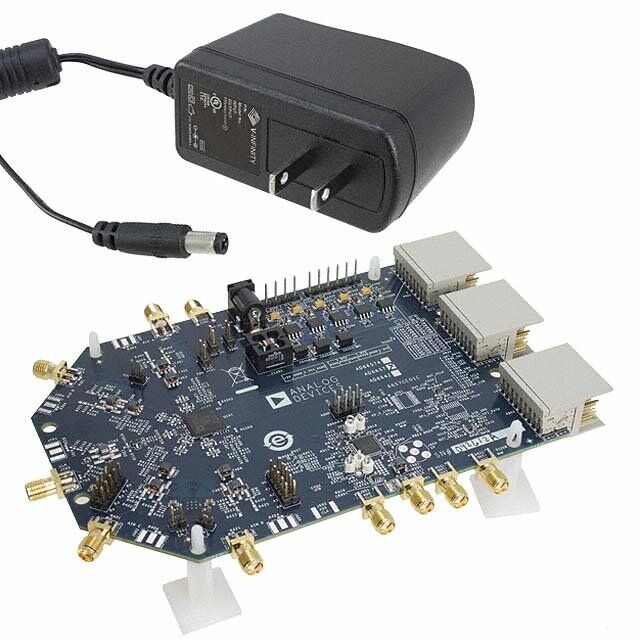
 Datasheet下载
Datasheet下载


